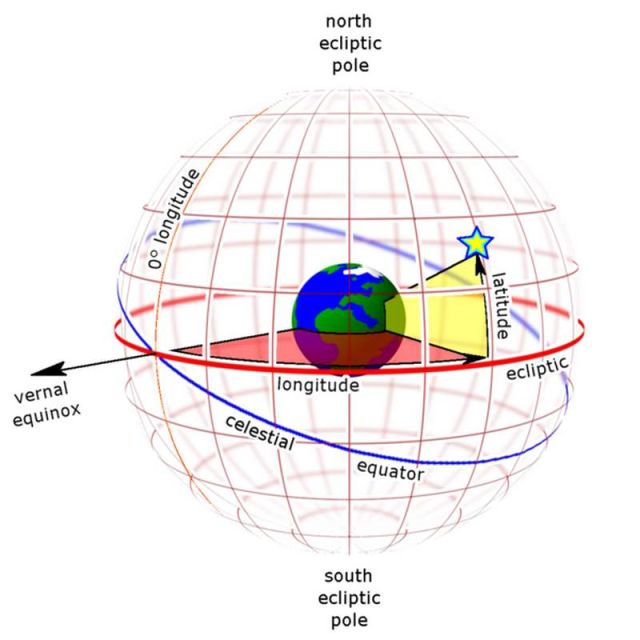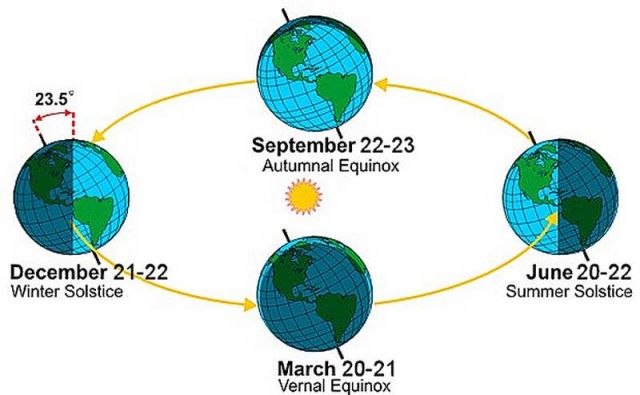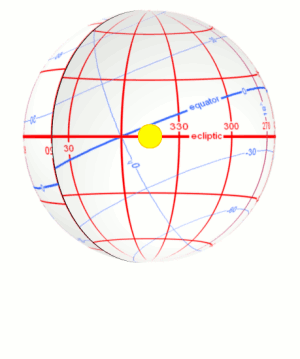Winter solstice on September 22: the shortest day of the year, with the sun at its lowest point in the sky.
The December solstice, this year at 22nd at 04:49 GMT (Universal time), marking the longest night and shortest day of the year, happens at the same instant, everywhere on Earth.
The Winter Solstice is taking place at the moment the North Pole reaches its furthest point from the sun, when it is tilted furthest, 23.5 degrees away from the Sun.

Earth-centered ecliptic coordinates as seen from outside the celestial sphere
The solstice may have been a special moment of the annual cycle for some cultures even during neolithic times. Astronomical events were often used to guide activities such as the mating of animals, the sowing of crops and the monitoring of winter reserves of food. Many cultural mythologies and traditions are derived from this. This is attested by physical remains in the layouts of late Neolithic and Bronze Age archaeological sites, such as Stonehenge in England and Newgrange in Ireland. The primary axes of both of these monuments seem to have been carefully aligned on a sight-line pointing to the winter solstice sunrise (Newgrange) and the winter solstice sunset (Stonehenge). It is significant that at Stonehenge the Great Trilithon was erected outwards from the centre of the monument, i.e. its smooth flat face was turned towards the midwinter Sun. The winter solstice was immensely important because the people were economically dependent on monitoring the progress of the seasons. Starvation was common during the first months of the winter, January to April (northern hemisphere) or July to October (southern hemisphere), also known as “the famine months.”
The apparent motion of the Sun along the ecliptic
More at news.nationalgeographic
source – images wikipedia







Leave A Comment